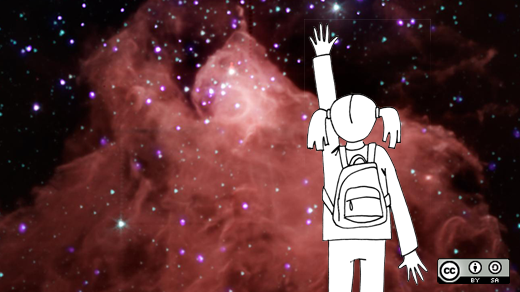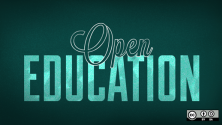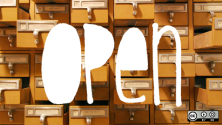I was asked to explain why the introduction of open educational resources into the education ecosystem might in fact be one of the most important things that has happened to education in the last 100 years. I guess in centuries before we might have said that it was the Socratic Method, or the advent of public schooling, or teaching to the agrarian calendar. Each of these has certainly contributed to moving some part of learning more visibly into the public sphere. Similarly, open educational resources (broadly defined as educational content that is made free to use or share, with the intention of being able to modify content and reshare it back out to the commons), has in many ways taken education by storm (and surprise in some cases). Why?
Because it provides a learner-centered platform that authentically marries technology with education, provides access and equity to education resources for all, and last but not least, is in some cases enabling the re-professionalism of teaching.
The concept, in some ways, is fairly simple. I create a lesson plan and activities for my class and I post it online. I license it in a way that allows others to use it for free, to share it, to adapt it to their own unique teaching needs, and then to re-post it for others to use. Teacher B comes along and says, “Hey, I like that, but I don’t think Teacher A really got that part right.” So Teacher B modifies the content, improving it in the process, adds some additional activities and reposts online. And so on. Why is this a great idea? Well, because now, not only has this material become a part of a continuous improvement cycle, it has also been made available for anyone else in the world to use. An added benefit is if you assume that Teacher A and B are paid by the state (such as a public school teacher or 2- or 4- year public college or university instructor), then we’ve even already paid for this content through our well-spent tax dollars. Either way, licensing content openly signals the start of the “commons” a place where all people, teachers and learners, can have access to the world’s knowledge. It’s free, sharable, dynamic, and remixable.
Early on in the open education movement, the case was made that free content would save the education sector millions of dollars if they didn’t have to buy expensive textbooks (perhaps there is something to be learned from the demise of the Recording Industry?). However, more affordable education is just one part of the package. But perhaps equally as important, to an educator like myself, is the potential that open education resources have to offer the professionalism of teaching. At ISKME, our research in open education and also in working with teachers and educators around the globe, we have seen that while reduced cost and ease of use have been initial drivers of use, open content also encourages new patterns of collaboration in curriculum development and in enhanced student-centered learning. It places the teacher back in the driver’s seat as the pedagogy expert. But best of all, this is no longer accomplished alone in a silo as many teachers currently practice their craft, but in an open space that encourages collaboration, improvement, access, and innovation.
One example of this is ISKME’s OER Commons, an open education network that focuses on the curation and federation of open content from over 200 content partners (such as NASA, MIT OpenCourseware, WGBH, and many others). This has evolved into the networking and professional development of teachers worldwide who collaborate on improving and creating open content. A key component of this work has been to help educate the educators about copyright and content licensing as well as to introduce social collaboration environments that serve as catalysts to encourage teachers and learners to the shift from a consumer culture of education (where teachers deliver and students buy) to one in which teachers and learners gain leadership and support to share and build expertise from within.
Now what would Socrates think of that?







5 Comments